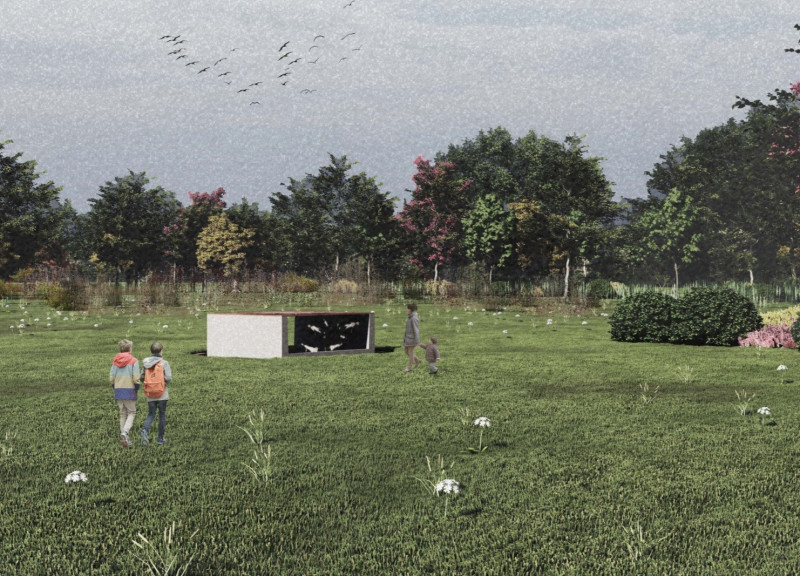5 key facts about this project
The Last Genocide Memorial presents a deliberate architectural response to the need for remembrance, reflection, and communal healing. This project situates itself within a landscape that bears witness to historical atrocities, utilizing structural and material choices to create a space conducive to contemplation and education. The design incorporates a blend of materials such as Corten steel, concrete, and natural elements, effectively balancing aesthetic and functional aspects.
The main structure is a cubical form, crafted from polished concrete, which represents permanence. It is encircled by a ring of weathered Corten steel, a material chosen for both its visual weight and resistance to deterioration, evoking a sense of time and historical memory. The memorial serves not only as a site of mourning but also as a space that invites dialogue about past and future human experiences. The incorporation of natural soils and planting areas further enhances its connection to both the past and the potential for regeneration.
Material and Form Integration
The unique integration of materials enhances the architectural narrative of the Last Genocide Memorial. Corten steel's rusted appearance contrasts sharply with the smooth, light-reflective surfaces of concrete, symbolizing the intersection of hope and despair. This interplay of materials results in a tactile experience that encourages visitors to engage with the structure in a physical and emotional sense.
Key features include the interior illumination, which uses light to cast shadows that create the effect of etched figures on the inner walls. This illumination facilitates an immersive environment where individuals can engage with the collective memory of lives lost. Moreover, the landscaping—comprising natural soil layers and various flora—supports environmental sustainability and symbolizes growth and resilience amidst grief.
Design Approach and Visitor Engagement
The architectural approach taken in the design of the Last Genocide Memorial emphasizes interaction and engagement. Visitors are guided through the memorial in a way that involves navigating diverse light conditions and varying spatial experiences. The design invites personal reflection while also promoting a communal understanding of the past.
Distinct from traditional memorials that often fixate on static forms, this project encourages movement and exploration, allowing individuals to interpret their experiences freely within the space. The deliberate use of landscape architecture alongside structural elements fosters a harmonious relationship between built form and nature, creating a reflective atmosphere conducive to memory and healing.
For those seeking a deeper understanding of this architectural project, comprehensive architectural plans, sections, and designs are available for exploration. Such materials provide valuable insights into the systematized thinking that shaped this memorial's development. Readers are encouraged to review the architectural ideas that comprise the Last Genocide Memorial to appreciate the project’s intricate design details fully.























































